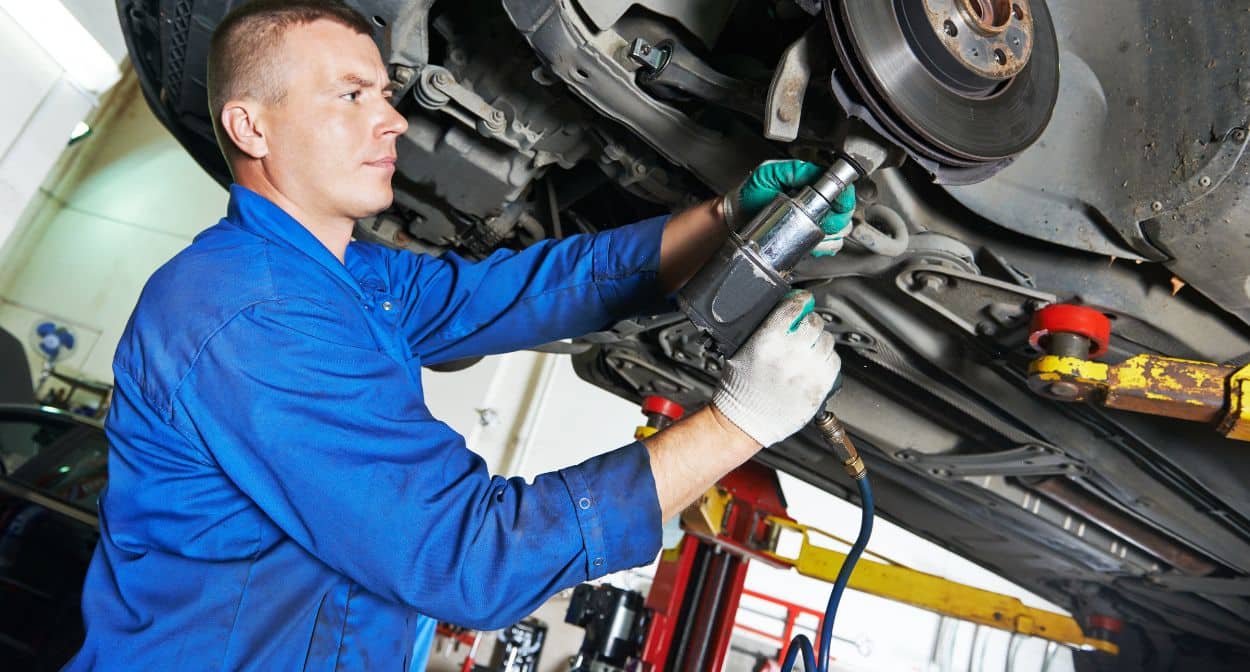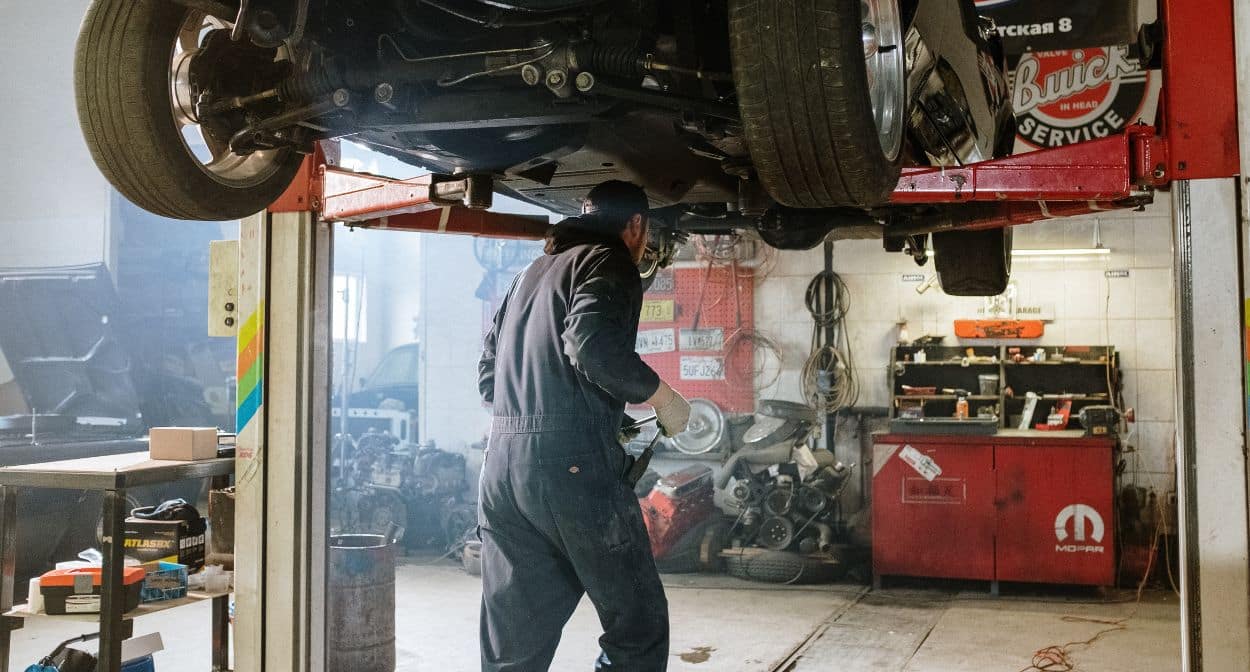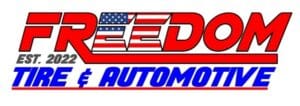Your car’s suspension system is critical to ensuring a smooth and safe ride. It absorbs shocks from uneven roads, maintains proper tire contact, and supports vehicle stability during turns or sudden stops. However, like any component, your suspension system can wear out over time, leading to noticeable performance issues. Identifying early signs of suspension trouble is essential to avoid costly repairs and maintain optimal driving safety. From unusual noises to uneven tire wear, your vehicle often gives subtle hints when the suspension isn’t functioning as it should.
Ignoring suspension problems can lead to reduced handling, increased stopping distances, and even damage to other parts of your vehicle. Understanding the warning signs can help you take prompt action and ensure your car remains roadworthy. In this guide, we’ll explore common symptoms of suspension issues, why they occur, and what you should do if you notice them. By addressing these problems early, you can save time, money, and ensure a safer driving experience.
Signs Your Suspension Needs Repair

Unusual Noises
One of the first signs that your suspension may need repair is the presence of unusual noises when driving. If you hear clunking, knocking, or squeaking sounds while going over bumps or turning corners, it could indicate worn-out components such as struts, shocks, or bushings. These noises often signal that parts are loose or failing and should be inspected by a professional.
Poor Handling
If you notice that your vehicle is handling poorly—such as swaying excessively during turns or feeling unstable on uneven surfaces—this could be a sign of suspension issues. A well-functioning suspension should provide a smooth ride and maintain stability. If your car feels like it’s tipping over or you have to constantly adjust the steering wheel to stay straight, it’s time to have your suspension checked.
Uneven Tire Wear
Inspecting your tires can also provide clues about your suspension’s health. If you notice uneven tire wear patterns—such as bald spots on one side or excessive wear on the inner or outer edges—this could indicate alignment issues related to the suspension system. Proper alignment is essential for even tire wear and optimal handling.
Drifting or Pulling
When driving straight, if your vehicle drifts to one side or pulls in a particular direction without any input from you, it may be a sign of suspension problems. This can occur due to misaligned wheels or worn-out components within the suspension system, affecting how weight is distributed across the tires.
Bumpy Ride
A noticeable increase in ride harshness can indicate that your shocks or struts are failing. If you find yourself feeling every bump in the road more than usual or if the vehicle feels like it’s bouncing excessively after hitting a bump, it’s likely that your suspension system is no longer absorbing shocks effectively.
Fluid Leaks
Suspension systems often contain hydraulic fluid for shock absorbers and struts. If you notice any fluid leaks under your vehicle—especially near the wheels—it could indicate a problem with these components. Leaks can lead to decreased performance and should be addressed promptly.
Visible Damage
Sometimes, visual inspection can reveal issues with your suspension system. Look for any visible damage such as cracked or broken components, rusted parts, or misaligned wheels. If any part of the suspension system appears damaged or out of place, it’s advisable to seek professional assistance.
Increased Stopping Distance
A failing suspension can also affect braking performance. If you find that it takes longer for your vehicle to come to a stop than it used to, this could be due to poor weight distribution caused by a malfunctioning suspension system. This not only affects safety but also increases wear on braking components.
Why Timely Suspension Repair Matters

The suspension system in your vehicle plays a critical role in ensuring a smooth ride, maintaining control, and preserving safety. Neglecting suspension issues can lead to more significant problems, higher repair costs, and even dangerous driving conditions. Here’s why addressing suspension repairs promptly is essential:
1. Safety First
The suspension system helps keep your tires in proper contact with the road, ensuring stable handling and braking. Worn shocks, struts, or other components can increase stopping distances, cause uneven tire wear, and make your vehicle harder to control, particularly during sharp turns or sudden stops.
2. Prevents Further Damage
A failing suspension doesn’t just affect your comfort—it can also strain other vehicle components, such as tires, axles, and the steering system. Addressing minor suspension problems early can prevent a domino effect of costly repairs.
3. Protects Your Tires
Suspension issues can cause uneven tire wear, reducing their lifespan and compromising traction. Investing in timely repairs helps you get the most out of your tires and avoid frequent replacements.
4. Improves Driving Comfort
If you notice excessive bouncing, swaying, or nose-diving during braking, these are signs of suspension trouble. Timely repair restores your vehicle’s smooth ride, making every journey more enjoyable.
5. Boosts Fuel Efficiency
A well-maintained suspension reduces rolling resistance and ensures optimal alignment, both of which contribute to better fuel efficiency. Ignoring suspension problems can lead to misalignment, forcing your engine to work harder and consume more fuel.
6. Maintains Vehicle Value
A car with a properly functioning suspension system maintains better value over time. Regular repairs signal to potential buyers that the vehicle has been well cared for, making it easier to sell or trade-in later.
How to Confirm Suspension Issues

1. Recognize Symptoms While Driving
- Uneven Tire Wear: If your tires are wearing unevenly, it could indicate suspension misalignment or worn-out components.
- Pulling to One Side: The car may pull to one side even when driving on a straight road, indicating alignment or suspension problems.
- Excessive Bouncing: A worn-out suspension may struggle to absorb shocks, causing excessive bouncing after hitting a bump.
- Rough Ride: If the car feels unusually rough or bumpy, it might point to suspension issues.
- Noises: Clunking, squeaking, or knocking noises when driving over bumps or turning could signal worn suspension parts like shocks, struts, or bushings.
2. Perform Visual Inspections
- Shocks and Struts: Look for leaks or physical damage. Any visible oil leakage on shocks or struts is a sign they need replacing.
- Suspension Bushings: Check for cracks, wear, or missing bushings that could cause instability.
- Ball Joints: Inspect for looseness or visible damage in the ball joints, which can affect steering and stability.
- Springs: Look for sagging or broken coil springs, which can lower the car’s ride height unevenly.
- Tires: Check for “cupping” (scalloped dips around the tire tread), which often indicates suspension issues.
3. Conduct Simple Tests
- Bounce Test: Push down firmly on one corner of the car and release. If it bounces more than once or twice, the shocks or struts may be worn.
- Steering Wheel Test: If the steering feels loose or makes noises when turning, the suspension system could be a culprit.
- Height Check: Measure the car’s ride height at all four corners. Significant differences suggest a suspension issue.
4. Professional Diagnosis
If the symptoms persist, take the car to a certified mechanic. They will:
- Perform a suspension system inspection using specialized tools.
- Check for alignment issues with precision equipment.
- Use diagnostic tests to assess hidden problems like worn control arms, tie rods, or sway bars.
Conclusion
Being aware of these signs can help you maintain your vehicle’s suspension system effectively and ensure a safer driving experience. Regular inspections and timely repairs are vital in preventing more severe issues down the line. If you notice any of these warning signs, consult with a qualified mechanic who can diagnose and address any problems with your vehicle’s suspension system promptly.
By staying proactive about your vehicle’s maintenance needs, you can enjoy smoother rides and prolong the life of your car’s components while ensuring safety on the road. For reliable suspension repair services, contact us today!

